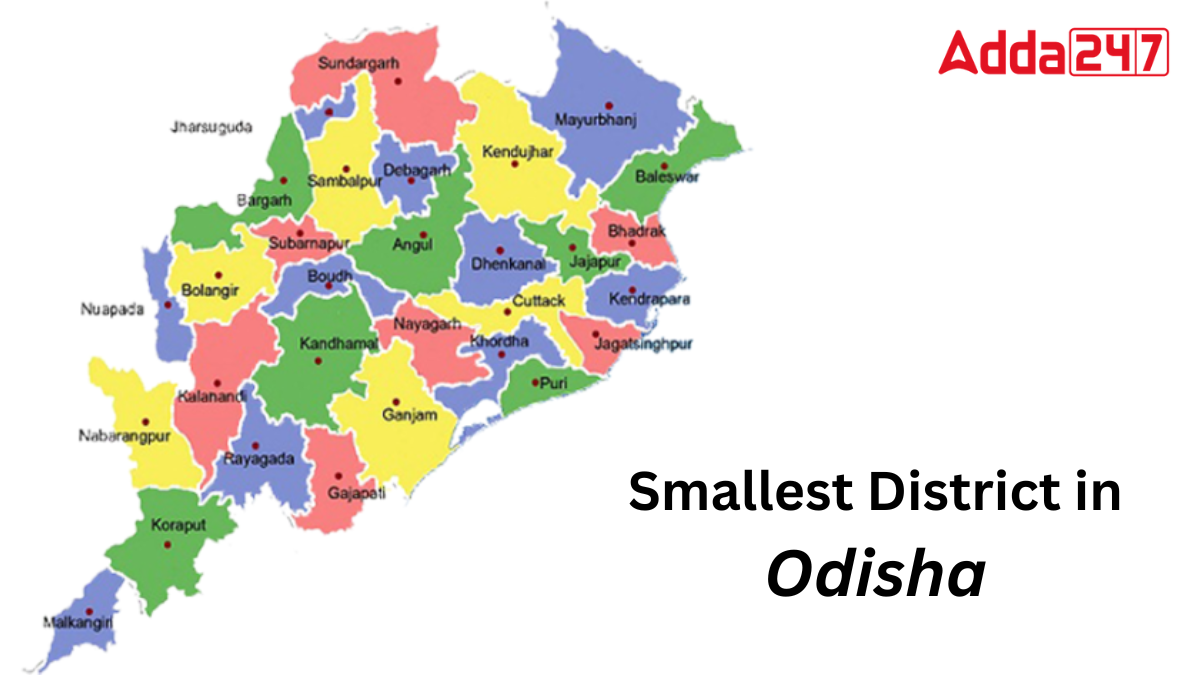Jagatsinghpur District, located in the eastern coast of India, is the smallest district in the state of Odisha, covering a landmass of 1759 km². It was carved out of Cuttack district on April 1, 1993, and has its headquarters in Jagatsinghpur town. In this article, we will delve into the district’s history, independence movement contributions, archaeological importance, geography, and more.
Smallest District in Odisha – Historical Significance
Jagatsinghpur district boasts a rich heritage tracing back to the 6th century AD, showcasing remnants from the Prachi valley civilization. Initially under Mauryan rule, it later became part of the Chedi kingdom of Kharavela. During the Gupta era, significant support was extended to Buddhist monasteries. Subsequently, a blend of Hindu, Muslim, Maratha, and British influences characterized the region, with the East India Company establishing arsenals in Hariharpur in 1600.
Archaeological Importance of Odisha’s Smallest District
Jagatsingpur district holds significant archaeological importance with a plethora of artifacts, including silver punch-marked coins dating back to the Maurya period and imitations of Kushan coins. Its landscape is adorned with temples exemplifying the Kalingan style, such as the revered Lingaraj Mahadeva, Singhnath Siva temple, and Amangai temple, all serving as poignant symbols of the district’s rich religious and cultural heritage.
Smallest District in Odisha – Geography
Location: Situated on an elevation of 15 meters, Jahatsinghpur district is triangular, bordered by the Prachi valley in the south and Chitrotpala in the north, surrounded by Kendrapara, Cuttack, Puri, and the Bay of Bengal.
Climate: Temperate climate with hot and humid summers and cold winters. Four major rivers, including the Mahanadi, irrigate the region.
Smallest District of Odisha – Demographics
As per the 2011 census, Jagatsinghpur district, the smallest district in terms of area, boasted a population of 1,136,971, with Hinduism reigning as the predominant religion. The linguistic landscape primarily revolves around Odia, serving as the primary language spoken by the majority of the populace, thus reflecting the region’s cultural and linguistic fabric.
Economy of Odisha’s Smallest District
Jagatsinghpur district thrives on agriculture, cultivating staples such as paddy, sugarcane, turmeric, cotton, and jute, which form the backbone of its economy. Additionally, it stands as a prominent industrial center within the state, hosting various industries. Of notable significance is the Paradip port, a pivotal sea port that has garnered significant foreign direct investment, thus playing a pivotal role in advancing the region’s economic landscape and fostering development.
Smallest District in Odisha – Education
The district boasts a substantial array of educational establishments, comprising primary and secondary schools, along with colleges and renowned institutions such as SVM Autonomous College. These institutions play a crucial role in catering to the educational needs of the local populace, offering a diverse range of academic opportunities and contributing to the intellectual growth and development of the region.
Smallest District of Odisha – Tourism
- Sarala Pitha: A spiritually significant site associated with Goddess Sarala.
- Gorakhnath Temple: A Lord Shiva shrine.
- Paradip Port: A major sea port with scenic attractions.
- Other Temples: Temples like Sidha Khaiphuta Bata Mahapurusha Pitha, Gada Kujanga, and Chandapur are culturally significant.
Odisha State at a Glance
- Country: India
- Region: East India
- Formation: April 1, 1936
- Odisha Day Capital and largest city: Bhubaneswar
- Districts: 30 (3 divisions)
- Government: Government of Odisha
- Governor: Raghubar Das
- Chief Minister: Naveen Patnaik (BJD)
- State Legislature: Unicameral Odisha Legislative Assembly (147 seats)
- National Parliament: Parliament of India
- High Court: Odisha High Court
- Area: 155,707 km2 (60,119 sq mi)
- Population (2011): 41,974,218
- Density: 269/km2 (700/sq mi)
- Demonym: Odia
- Official Language: Odia, English
- Literacy (2023): 75.15%
- Sex ratio (2023): 1063♀/1000 ♂




 Which Indian City is Known as the Footwe...
Which Indian City is Known as the Footwe...
 Which Desert is known as the Cold Desert...
Which Desert is known as the Cold Desert...
 Top-10 News Media Companies in the World...
Top-10 News Media Companies in the World...







